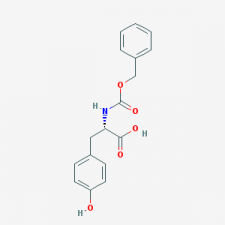Chemical suppliers can improve their performance in many different ways. They can use technology, switch to a new raw material, pursue a new customer group or enter a new region, or change their business model.
Chemical suppliers can improve their performance in many different ways. They can use technology, switch to a new raw material, pursue a new customer group or enter a new region, or change their business model. Ultimately, all of this is reflected in operational indicators - specifically, the seven indicators that we believe are most closely linked to TSR: revenue growth; margin; innovation and R & D; sales, general and administrative expenses (SG & A); fixed asset productivity; operational efficiency; and portfolio management.
Looking at the 20-year trend of these measures (or levers), we can have some interesting insights into the differences between regions and sub industries. But there is one thing to be careful about. In the chemical industry, just as in other industries, financial data need to be viewed from the right perspective. For example, not every percentage point of income growth is good: the benefits of income growth depend on the conditions needed to achieve that growth. Similarly, a higher level of SG & a spending is not always a bad thing; it may be necessary to support a portfolio covering multiple locations and customer segments, with greater flexibility due to this diversity.
Revenue growth
Like companies in other industries, there is usually a positive correlation between the revenue growth of chemical suppliers and TSR. But over the past 20 years, the correlation has been less pronounced, and in some cases, other factors seem to have outstripped income growth in determining TSR.
In fact, the TSR of a few chemical suppliers exceeds 10%, but there is little growth. Companies that do so tend to be either highly disciplined in margin management or creative in generating profits from non critical business units. For example, one of the slowest growing companies in our sample has remained competitive by offloading the most expensive part of the supply chain. By turning to virtual supply chain, it has offset the scale advantage of competitors and achieved satisfactory profits with relatively low investment level.
Despite rapid revenue growth, some companies have low TSR. Most of these companies have benefited from the rise in certain commodity prices, and their poor TSR performance shows that investors are reluctant to reward those whose revenue growth may be attributed to external trends.
In terms of location, the pattern is obvious. American companies, which have been growing rapidly, have benefited from this growth. The same is true for fast-growing European companies - especially those that have succeeded and increased their share in emerging markets.
bond
The biggest change in profit margins for chemical suppliers is the improvement in the European market. The profitability of European companies has been greatly improved, narrowing the huge gap with their counterparts in the United States. Portfolio changes, divestiture of sub critical businesses, and a shift from the bulk commodity business to a more advanced chemical business (where Europe is already at a disadvantage in the commodity sector) all contribute to the improvement of profit margins for European companies. European companies also focus on productivity in a variety of ways, including consolidating national structures into regional structures, establishing shared services for administrative functions, eliminating the complexity of the reporting matrix, and removing layers from their organizations.
By contrast, Japanese companies have been trying to improve profitability. Although European chemical suppliers faced the same challenge in the past, Japanese companies are now at the bottom of the list for profitability. To some extent, this suspicious difference is due to the slow action of Japanese enterprises in accepting enterprise transformation and looking for ways to expand overseas markets.
Among these industries, the biggest profit accelerator has been the growing global demand for food in the agricultural sector. Agrochemicals and fertilizers benefit from huge demand and the resulting price increases. Reduced arable land, coupled with increased demand for agricultural output, has boosted demand for productivity enhancing chemicals. The boom in food commodities is also good for pioneers who provide active raw materials, aromatic raw materials, mining chemicals and formula aids to fertilizer and agrochemical companies.
Profit margins in all other industries have been eroded to some extent, with basic chemicals and basic plastics companies doing the worst. Since the Iraq war in 2002, these companies have had to absorb the impact of rising oil prices, and they lack value-added products to recover the increased costs.

